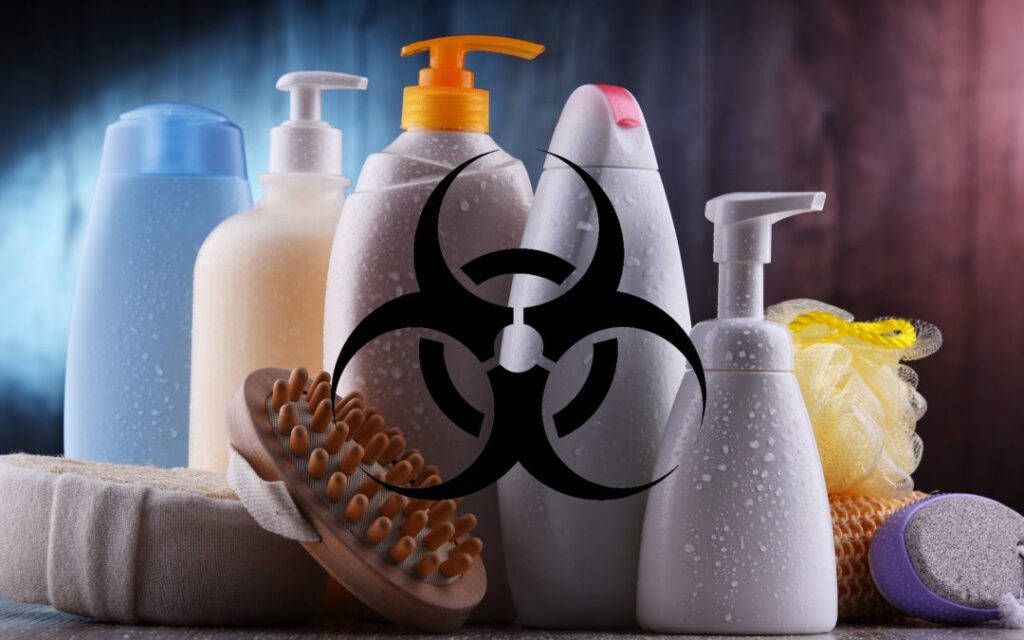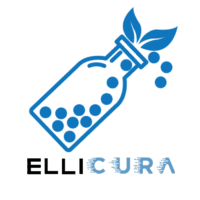“Toxic skincare ingredients”

Overview
- United States Ban: 11 ingredients
- European Union Ban: Over 1,300 ingredients
- US Skincare Laws: Not updated since 1938
- FDA Testing: Not required for cosmetics
Toxic skincare ingredients are mentioned below
Parabens
- Use: Artificial preservative to reduce mold and bacteria
- Health Concerns:
- Endocrine disruption
- Reproductive harm
- Increased cancer risk
- Skin irritation
- Common Products:
- Toothpaste
- Shaving gel
- Deodorant
- Sunscreen
- Face cleansers
- Moisturizers
- Conditioners
- Shampoos
- Label Names:
- Methylparaben
- Polyparaben
- Isobutyl paraben
- Propylparaben
- Butylparaben
Petroleum Jelly
- Use: Moisturizing agent in lotions
- Refinement Issue: Potential presence of polycyclic aromatic hydrocarbons (PAHs)
- Health Concerns:
- Absorption into skin, locking in moisture, bacteria, and dirt
- Not easily washable
- Primary Function: Forms a barrier on the skin rather than moisturizing
Oxybenzone
- Use: Commonly found in sunscreens
- Health Concerns:
- Contact allergies
- Endocrine disruption
- Organ toxicity
- Photoallergies
- Environmental Impact: Harmful to aquatic life, contributes to coral reef bleaching
Phthalates
- Use: In nail polishes, fragranced lotions, to make plastics flexible
- Health Concerns:
- Lung, kidney, reproductive system, and liver damage
- Forms in Cosmetics:
- Dimethyl Phthalate (DMP): Hair sprays
- Dibutyl Phthalate (DBP): Nail polish
- Diethyl Phthalate (DEP): Fragrances
Formaldehyde
- Use: Preservative in baby soaps, shampoos
- Health Concerns:
- Known carcinogen
- Allergic reactions
- Cancer
- Common Products:
- Hair gel
- Nail glue and polish
- Eyelash glue
- Baby soap and shampoo
Coal Tar
- Use: Anti-dandruff shampoos, hair dyes
- Health Concerns:
- Skin tumors
- Neurological damage
- Digestive tract, lung, kidney cancer
Carbon Black
- Use: Coloring agent in eyelash glue, mascara, eyeliner
- Health Concerns:
- Lung function disruption
- Increased cancer risk
- Label Names:
- Furnace black
- D&C Black No. 2
- Thermal black
- Lamp black
- Channel black
Fragrance
- Use: Added to products for scent
- Health Concerns:
- Allergic reactions
- Skin and respiratory conditions
- Migraines
- Label Names:
Artificial Colorants
- Use: Added to alter color of products
- Health Concerns:
- Skin redness, irritation, inflammation
- Acne irritation
- Potential toxic substances like arsenic or lead
- Label Names:
- Colorant
- Specific color names (e.g., “yellow 6”)
Sodium Lauryl Sulfate
- Use: Surfactant, foaming and cleansing agent in shampoos, body washes, face cleansers
- Health Concerns:
- Strips hair dye
- Allergic reactions
- Skin irritation
- Increased canker sores
Alcohol
- Types: Methanol, isopropanol, ethanol
- Health Concerns:
- Skin dryness
- Damages skin’s protective barrier
- Disrupts skin’s natural oil production
- Beneficial Fatty Alcohols:
- Cetearyl
- Stearyl
- Cetyl
- Lanolin
Beneficial Skincare Ingredients
Hyaluronic Acid
- Natural Source: Fluids in joints and eyes
- Benefits:
- Improves skin moisture
- Retains moisture
- Use: Suitable for dry and oily skin, effective as serum
Retinol
- Source: Derivative of vitamin A
- Benefits:
- Reduces wrinkles and fine lines
- Increases collagen production
- Improves skin color and texture
- Functions as an antioxidant
- Usage: Start with every other day application; use sunscreen during the day
Alpha-Hydroxy Acids (AHAs)
- Types:
- Glycolic acid
- Citric acid
- Lactic acid
- Hydroxycaprylic acid
- Malic acid
- Hydroxycaproic acid
- Tartaric acid
- Benefits:
- Prevents acne breakouts
- Brightens complexion
- Increases blood flow
- Improves collagen production
- Enhances product absorption
- Reduces fine lines and wrinkles
- Acts as humectants
Ceramides
- Function: Long-chain fats holding skin cells together
- Benefits:
- Prevents moisture loss
- Increases skin hydration
- Rejuvenates aging skin
- Protects against UV damage
- Common Products: Toners, serums, cleansers, moisturizers
Vitamin C
- Function: Antioxidant, fights free radicals
- Benefits:
- Protects against UV rays
- Lightens dark spots
- Smooths fine lines and wrinkles
- Boosts collagen production
- Maintains existing collagen
Niacinamide
- Source: Form of vitamin B3
- Benefits:
- Improves ceramide levels
- Builds keratin in skin
- Reduces pore appearance
- Minimizes redness and inflammation
- Regulates oil production
- Rebuilds healthy skin cells
- Lightens dark spots
- Treats acne
- Usage: Look for products with around 5% concentration; suitable for sensitive skin
Vitamin E
- Forms: Tocopherol, tocopherol acetate
- Benefits:
- Antioxidant, fights free radicals
- Protects against UV damage
- Widens blood vessels
- Reduces dermatitis symptoms
- Usage: Available in oil, cream form, eye serums, sunscreens, anti-aging creams
Algae Extracts
- Types: Red algae, spirulina, astaxanthin, green and brown algae
- Benefits:
- Increases moisturization
- Maintains collagen levels
- Improves hyperpigmentation
- Reduces inflammation
- Treats skin conditions
- Usage: Commonly found in moisturizers, serums, masks
Click here to know more about Collagen
Click here for consultation

